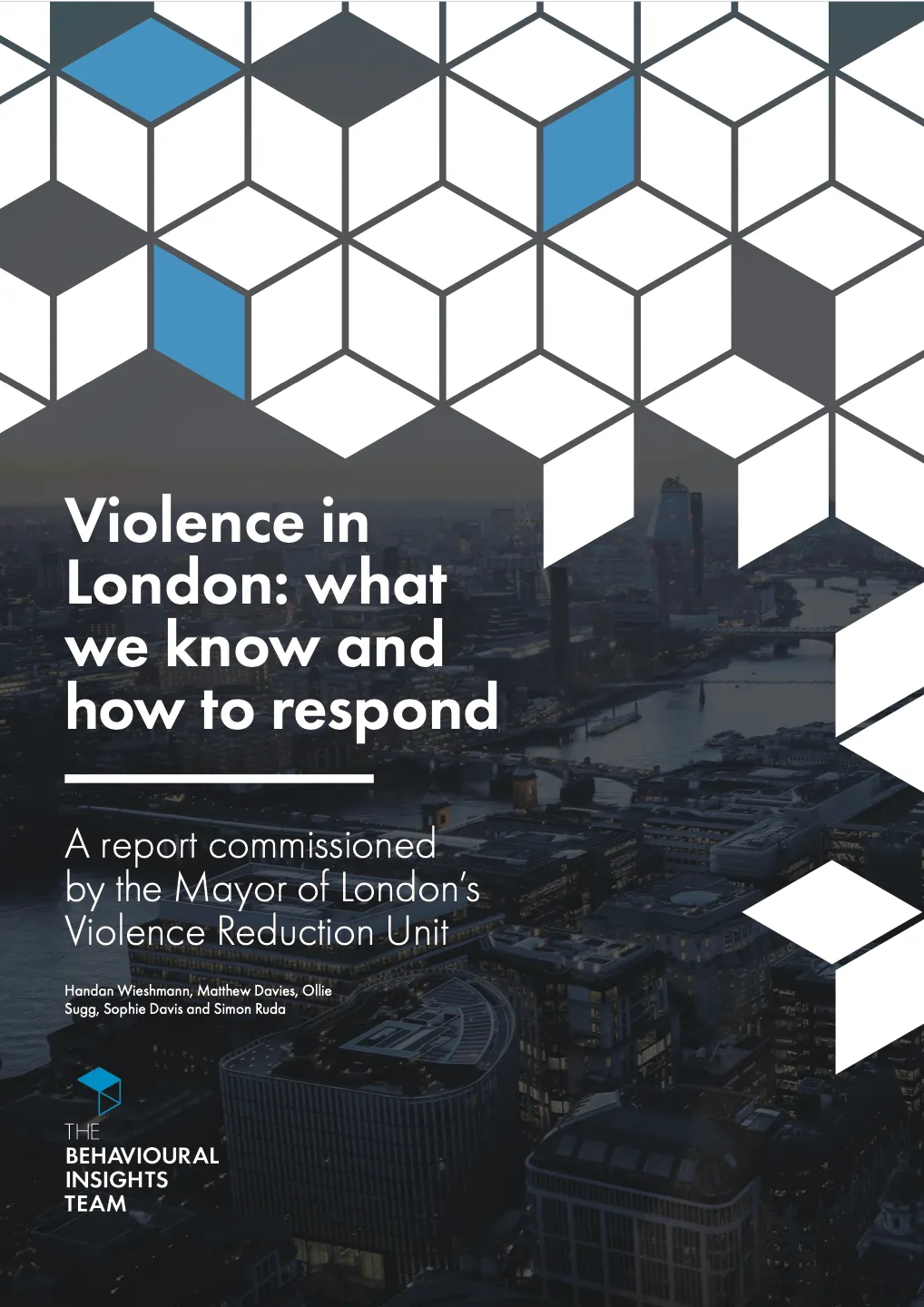
In the early hours of the first day of January 2019, a man was killed while working as a security guard at a New Year’s Eve party after he intervened to help a colleague involved in a struggle. In February, a man was murdered after refusing to give a stranger a cigarette in an off-licence. In March, a teenager was stabbed to death by another teenager in an alleyway. In April, a woman was found beaten to death in a flat. Her partner was charged with her murder.
These are some of the Londoners who lost their lives to violence last year. Their deaths illustrate the human consequences of violence in the capital, to the victims, those who loved them and their communities. They bring to the fore the pressing question - how can we prevent these tragic incidents from happening?
Though it plays a vital part, the criminal justice system alone cannot prevent violence and its consequences. A different approach is needed. One that seeks to understand the underlying drivers of violence, and can bring public sector agencies together with communities to address them.
The London Violence Reduction Unit (VRU) was set up in 2018 to drive this change in approach. Its goal is two- fold: firstly, to stabilise and reduce violence in the short term; secondly, to understand the underlying causes of violence and coordinate London’s communities and public organisations to address those causes in the longer term.
Last year, the VRU commissioned the Behavioural Insights Team (BIT) to develop a Strategic Needs Assessment to inform its approach to violence prevention in London. Strategic Needs Assessments are typically used in health and social care to identify the current and future health needs of local populations to inform and guide the planning of services within a local authority area.
Violence encapsulates a broad and complex set of behaviours, which can be both difficult to measure and difficult to prevent. Partly as a result of this, the evidence on what works to prevent violence is thin. The VRU and its partners must confront the problem that exists now – making the best decisions they can with the available evidence – whilst at the same time they must build the evidence base to inform future decisions.
This report will help the VRU and partners achieve that. We bring together existing research and analysis to present an assessment of what we know about violence in London, highlight what we do not know and set out recommendations for how the VRU and partners should respond.
Where possible, we draw on data and empirical evidence identified through research methods that enable us to test theories and hypotheses. In doing so, we do not disregard the human experiences that are behind the data, nor the voices of experienced practitioners and London’s communities. Instead, we aim to complement these with evidence of large-scale patterns and trends to help inform the VRU’s activities.
Understanding violence and working out how to prevent it is difficult. There is unlikely to be any quick fix or simple answer. But drawing on evidence to complement the strength and expertise of London’s communities and public services, and with the additional funding that has been provided by the Mayor of London and central government, we have an opportunity to pave the way for significant reductions in violence now and for future generations of Londoners.